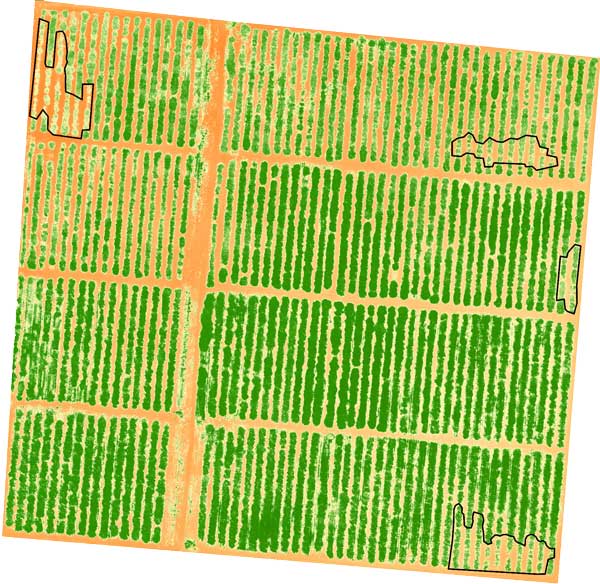Plant Stress
Benefits of calculating plant stress
- Early detection: Plant stress calculations can help identify stress conditions in plants at an early stage. This allows for timely intervention and management to prevent further damage.
- Improved crop yield: By monitoring plant stress levels, farmers can make informed decisions regarding irrigation, fertilization, and pest control. This optimization can lead to improved crop yield and quality.
- Resource efficiency: Calculating plant stress helps optimize the use of resources such as water, fertilizers, and energy. By applying these resources more efficiently, farmers can reduce waste and minimize environmental impact.
- Disease prevention: Plant stress calculations can help identify conditions that are conducive to the development of diseases. By taking preventive measures based on these calculations, farmers can reduce the risk of disease outbreaks and minimize crop losses.
- Cost savings: By managing plant stress effectively, farmers can reduce the need for costly interventions and treatments. This can result in significant cost savings over time.
Save
500 times faster than the traditional method
| Crop Name | Vegetation Phase |
|---|---|
| Wheat | BBCH 22-70 |
| Corn | V3-R3 |
Best time to apply plant stress
Determining the best time for calculating plant stress is crucial for accurate assessments and effective management strategies. Generally, it is recommended to conduct these evaluations during the early morning or late afternoon hours. During these times, temperatures are typically cooler, and the intensity of the sun is not at its peak. This allows for a more reliable measurement of plant stress levels, as it minimizes the immediate environmental stressors that can affect the results. By choosing the optimal time for assessment, farmers and researchers can obtain more accurate data to make informed decisions regarding irrigation, fertilization, and pest control.
An example of ASAgro's reports in the field of plant stress

The designated locations in this image indicate the presence of stress in the field
1 of 1Frequently Asked Questions
Yes, there are various tools and technologies available for plant stress calculation. These include remote sensing techniques, such as satellite imagery and drones, which can provide valuable data on plant health indicators. Additionally, there are handheld devices and sensors that measure parameters like soil moisture, leaf temperature, and chlorophyll content. These tools, combined with advanced data analysis techniques, can help you accurately assess plant stress and make informed decisions for better crop management.
The frequency of plant stress calculations depends on several factors, including the specific crop, environmental conditions, and growth stage. In general, it is recommended to monitor plant stress regularly throughout the growing season. This could involve weekly or bi-weekly assessments, especially during critical periods such as flowering or fruiting. However, it is important to consult with agricultural experts or utilize specialized tools that provide real-time monitoring capabilities to determine the optimal frequency for your specific crop and conditions. Regular monitoring allows for timely interventions and adjustments to optimize plant health and maximize crop productivity.
What Our Clients Say About Us
Contact Us
info@asauas.com
- Sharjah Media City, Sharjah, UAE
- (+971) 504 766 075

